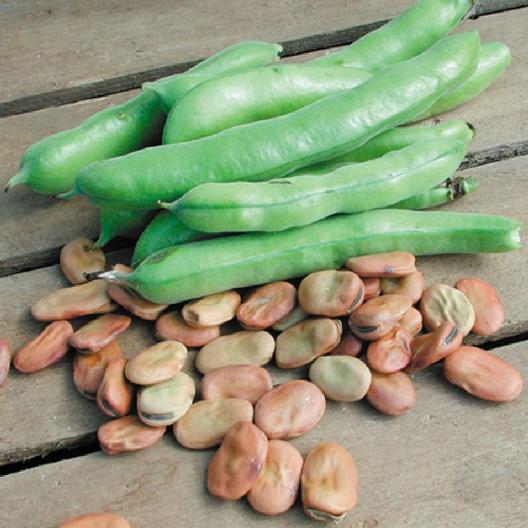Fava Bean Seeds
A note from Jim:
Fava beans (Vicia faba) are not in the same genus as other garden beans (Phaseolus). Their origin is reportedly the Mediterranean region and their history dates back to at least Biblical times. Favas are commonly used in Middle Eastern, Greek and Italian cooking.
Fava bean plants grow upright on 2'-3' tall (or even taller in ideal conditions), non-branching stems. They may require staking as they grow. Plants are very cold tolerant and can withstand temperatures as low as 20-25 degrees.
The young fava bean pods can be sliced and eaten like snap beans. Foliage tips can be pinched and are one of spring's tastiest greens. But, the beans are the best of all. The 6"-8" long pods contain 5 to 7 beans. They can be shelled when still green and cooked.
In many places, if plants are covered with straw or mulch in winter, roots may survive to come back next spring. Fava beans are generally easy to grow. They enjoy the same conditions as peas.
Caution: A small percentage of people of Mediterranean descent may experience an hereditary allergic reaction to fava beans.

This Mediterranean heirloom can be planted early, just after the last frost. The tall bushy plant produces pods filled with quarter-sized beans that are delicious when dried and eaten as shell beans. They can also be eaten fresh, along with the young leaves that are delightful spring greens.
Farmers of the Mediterranean region and Northern Africa have been cultivating the fava bean for thousands of years; some historians date this bean back to the Bronze Age and the ruins of Troy. Originally raised as cattle fodder, fava beans soon became a staple all over the world. Ancient tradition viewed the fava bean as a good luck symbol of sorts, as farmers would keep them to ensure a good crop next year. Housewives kept them in their pantries with the belief that this would prevent loss of the necessities of life. Though well known in the culinary establishments of Europe and a favorite in England, the fava bean is just beginning its journey to America.
The classic fava bean. 85 days. 2-3 feet tall plants produce 1 in. wide, 6-8 in. long pods containing 5-6 large beans.

